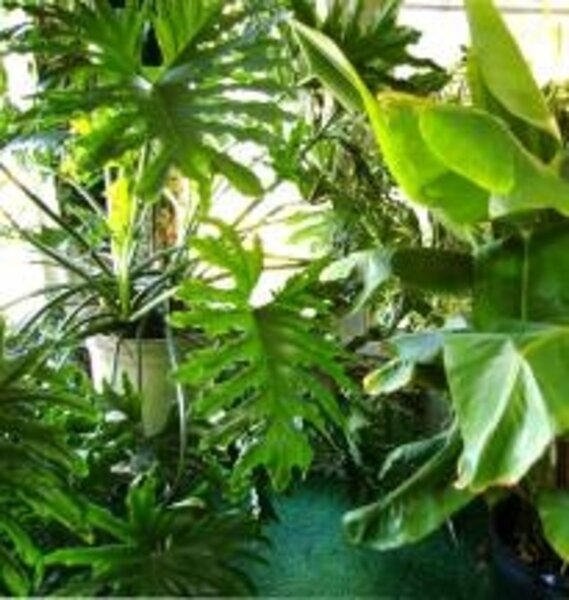How to overwinter tropical fruits and other tender plants
Loading...
I’ll admit it. I’ve been sleeping with bananas for the past 10 years.
They’re considerate roommates that conjure visions of warm breezes, fruity drinks with paper parasols, and white beaches – despite the lead-gray skies and endless ice and snow six months out of the year here in the upper Midwest.
Broad banana leaves curtain my bedroom window all winter and frame the snow fields beyond the glass. Every few weeks, another huge leaf unfurls and pushes the towering plant that much closer to fruiting. And, bananas don’t snore, unlike other bed partners.
These plants, normally found in along the white beaches of San Diego and near the sultry Gulf of Mexico – places where I spent much of my life – bear fruit and huge, striking flowers even in cold climates if carried over from year to year.
Who wouldn’t want stalks of red bananas, sweet-tart kumquats, and luscious figs on their patio? Their musky floral aromas and succulent fruits set the mood for gracious outdoor living.
I’ve learned from experience there are three ways to overwinter any tender plant.
Treat them as houseplants
• Choose a south-, east-, or west-facing window. Citrus will flower in strong southern or western light and set fruit if you hand-pollinate their blossoms. Three to four hours of sun daily will sustain most plants.
• Fertilize citrus monthly so that plants have a steady supply of nutrients. They’re still growing and forming leaves and/or fruit.
• Make sure bananas are in a warm environment (above 65 degrees F. or 18 degrees C) and have at least eight hours of direct light daily. (If there isn't enough light available, see below for how to force them into dormancy.)
• Do not repot plants brought indoors for the winter, as they will not add roots during the winter months. Extra soil in a bigger container will only encourage root rot.
Force dormancy
• Store large container-grown tropicals and figs in a dark area that remains above 32 F. (0 C) and under 50 F. (10 C). Heated garages, basements, and deep closets are perfect.
• Water containers every two to three weeks so that roots stay hydrated.
• Bananas planted in the ground can be forced into dormancy, too, by cutting off all leaves (leave main stem intact) and digging up the plant, taking a good amount of the root system. Remove as much dirt as possible to lighten weight. Place the root ball in a plastic tub, on a tarp, or even in a heavy plastic trash bag. Dampen the root ball every few weeks. Replant the next spring in the same spot where the banana grew previously.
Lift and store
Many exotics - such as gloriosa lilies, ginger (Zingiber officinale), and black taro – grow from underground bulbs, tubers, and corms. Remove dirt from the swollen portions, set on newspapers in a shady area or the garage to cure for a couple of days. Cut off top growth.When nights drop into the low 40s, plant leaves will start to brown and die. This is your cue to dig them up.
Pack the bulbs, corms, and tubers in a box filled with dry peat moss or vermiculite. Store in a dark area where the temperature remains between 35 F. (2 C) and 55 F. (13 C). Plant outdoors again in the spring.
If it’s edible and unusual, Doreen Howard figures out a way to grow it in her USDA Zone 4b garden. She’ll try anything once, even smelly Durian. A former garden editor at Woman’s Day, she writes regularly for The American Gardener and The Old Farmer’s Almanac’s Garden Guide.
Editor’s note: Look for more blog posts by The Edible Explorer, Doreen Howard, at our blog archive. For more Monitor gardening, see our main gardening page and our RSS feed.
You may also want to visit Gardening With the Monitor on Flickr. Take part in the discussions and get answers to your gardening questions. If you join the group (it’s free), you can upload your garden photos and enter our next contest.






